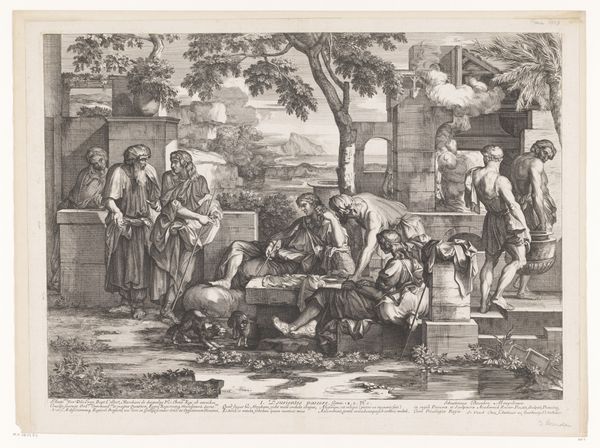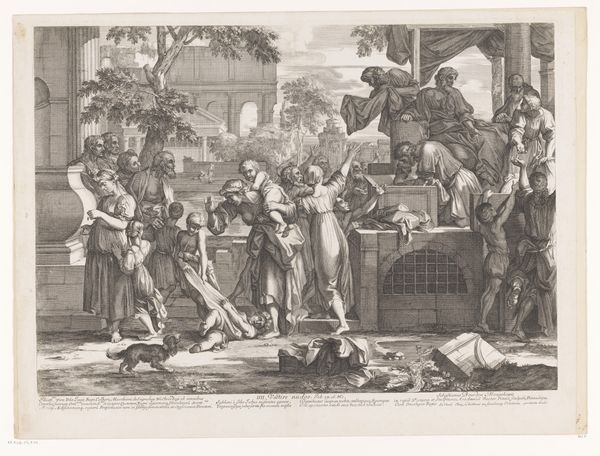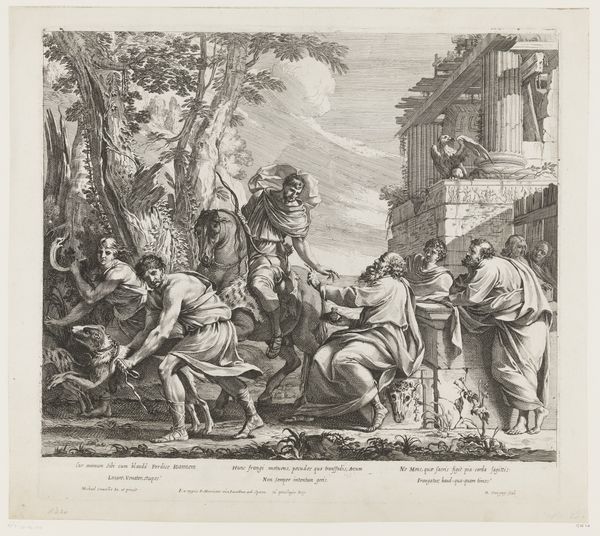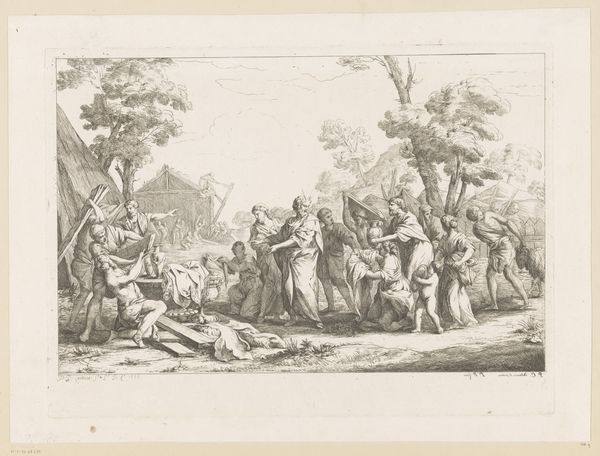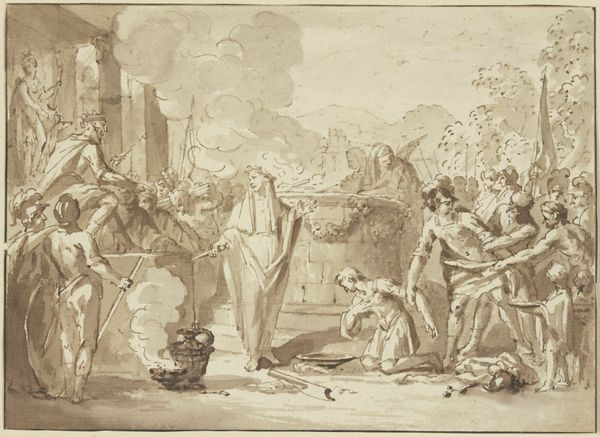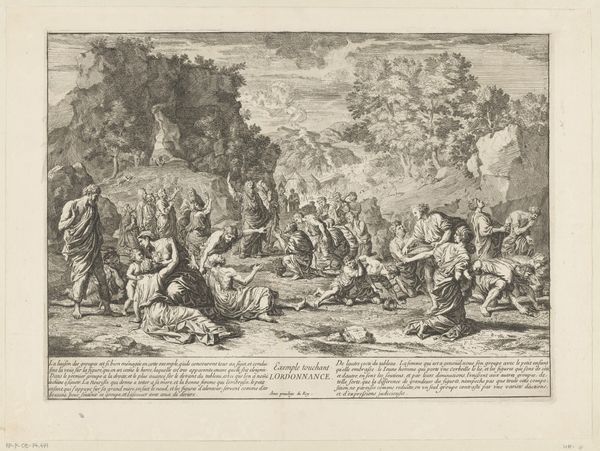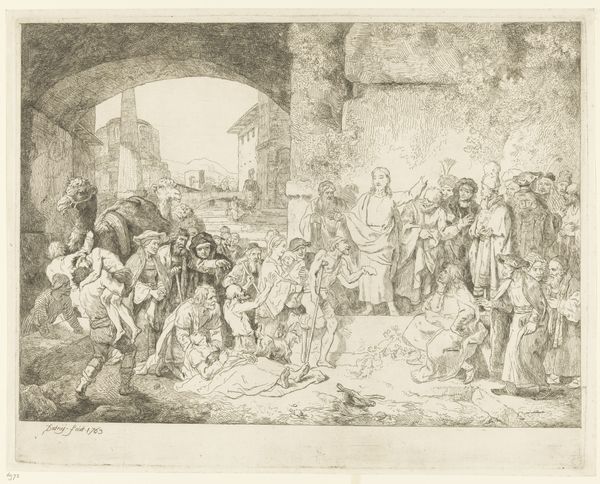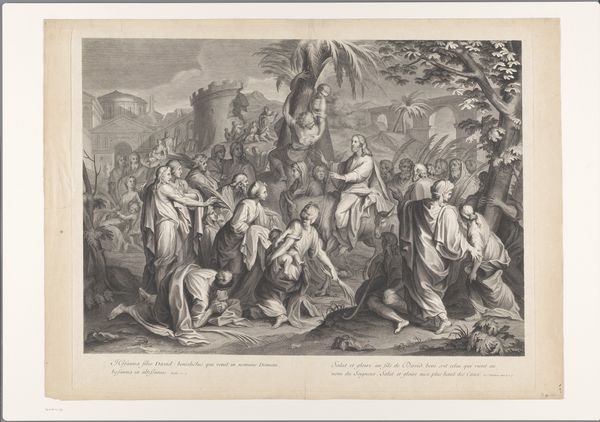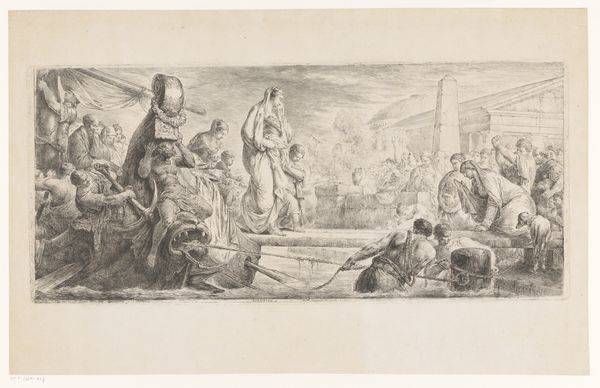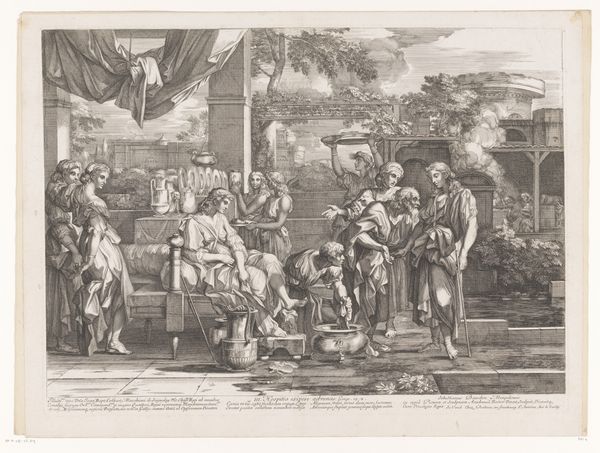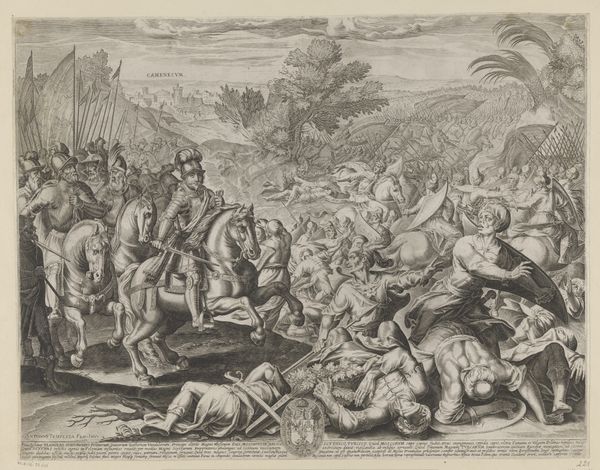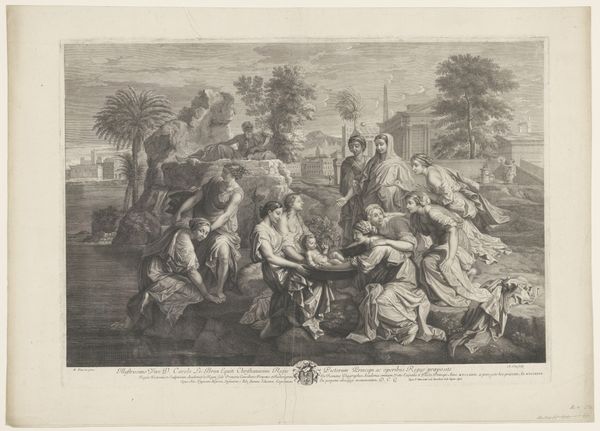
drawing, print, engraving
#
drawing
#
ink drawing
#
narrative-art
#
baroque
# print
#
landscape
#
figuration
#
pencil drawing
#
line
#
cityscape
#
history-painting
#
engraving
Dimensions: height 435 mm, width 583 mm
Copyright: Rijks Museum: Open Domain
'The Liberation of Prisoners' was etched by Sebastien Bourdon sometime in the 17th century. The printmaking process begins with a metal plate, typically copper. The artist coats the plate with a waxy, acid-resistant substance, then draws their design with a sharp needle, exposing the metal. The plate is then submerged in acid, which bites into the exposed lines, creating grooves. Once the etching is complete, the plate is inked, and the surface wiped clean, leaving ink only in the etched lines. Finally, damp paper is pressed against the plate, transferring the ink and creating the print. Consider how the incised lines define the composition, delineating light and shadow, texture and form. The linear quality contributes to the scene's drama and intensity, underscoring the weighty subject of captivity and freedom. This was a laborious process demanding precision and skill. The resulting prints could be widely distributed, making art accessible to a broader audience and shaping cultural and political discourse. Appreciating the printmaking process allows us to understand the value placed on skill and labor, and the power of images to shape public opinion.
Comments
No comments
Be the first to comment and join the conversation on the ultimate creative platform.
